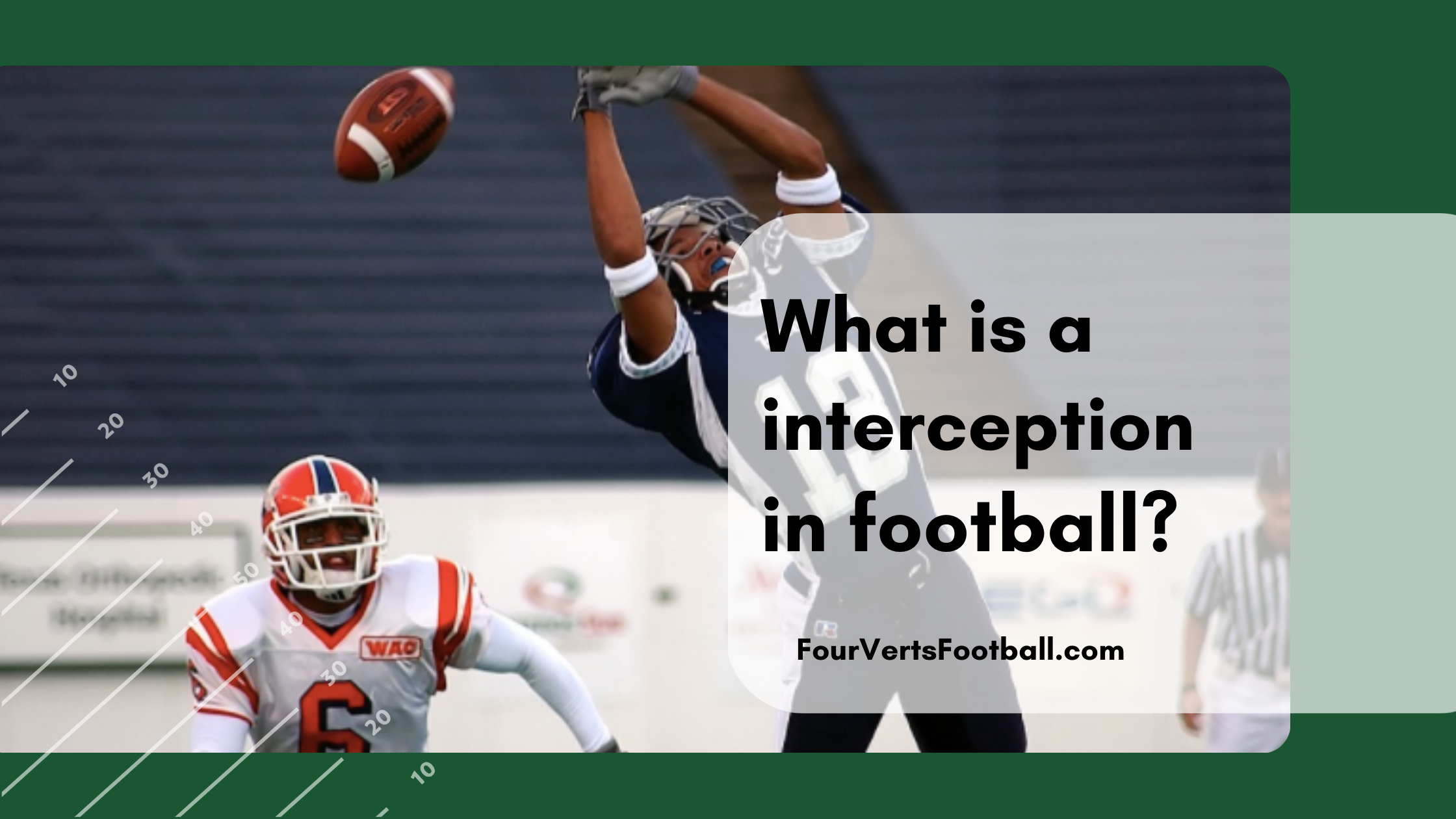An interception in football occurs when a defender catches a forward pass thrown by the opposing team’s quarterback. When an interception is thrown the possession of the ball is given to the other team.
This means if your team is on offense and your quarterback throws an interception the other team will now bring the offense on the field and it is your turn to play defense.
This is why an interception is considered a turnover.
What Happens When An Interception Is Thrown?
Now that you know what an interception is it’s time to break down what happens afterwards.
When the ball is intercepted by a defender he has the opportunity to return the ball just like any other player catching a pass.
The second the ball is taken away all eleven offensive players now focus their sites on the player that caught the ball. These offensive players all become would-be tacklers and look for a way to bring down the ball carrier.
The defenders on the other hand put their energy toward protecting the ball carrier. The remaining ten defensive players will now act as blockers looking to open up space for their teammates.
In many cases, the interception is returned all the way back to the opposing team’s end zone. This is referred to as a pick-six and counts as a touchdown for the team that intercepted the ball.
Which Position Gets Interceptions?
Similar to how touchdowns are usually scored by running backs or receivers, interceptions are also a statistic skewed towards certain positions.
The position which is most often leading the league in interceptions is cornerback. Cornerbacks cover outside receivers and attempt to not allow the quarterback to complete passes.
Their main purpose on the field is pass coverage and for this reason, they are often in a position to intercept the ball. That being said getting an interception as a cornerback is still quite a difficult feat.
The next most common position to score an interception is free safety. Free safeties are players that often sit deep into the defensive backfield defending long passes from being completed.
These players are usually facing the quarterback and have a unique opportunity to have a vision of the entire field. This often results in these players anticipating throws, ultimately giving themselves an opportunity to pick off a ball.
Additionally, these players don’t tend to play one on one coverage. This means it is less risky for these types of players to attempt an interception. As if they miss they will often have another defender nearby ready to bring down the receiver.
What is a pick six in football?
One term you are often going to hear associated with interceptions in football is pick six. A pick six in football refers to a play in which a player intercepts the football and returns it all the way back for a touchdown.
In football interceptions will often be referred to as a “pick” you may also hear announcers say that a pass has been “picked off”.
Additionally, when a team gets a touchdown they are awarded six points before they attempt the extra point.
For this reason, an interception returned for a touchdown is referred to as a pick-six.
Interceptions are brought back for a touchdown fairly often. The reason for this is that offensive players are not usually in a position to make a tackle when the ball is turned over.
It is common for cornerbacks to intercept the ball and only have the wide receiver they were covering nearby.
If the cornerback is able to get past that wide receiver they are often going to have a lot of open field in front of them. Since cornerbacks are quite fast these players are often able to take the ball all the way to the endzone.
What happens when you get an interception in the endzone?
One more confusing aspect of these plays occurs when interceptions are caught in the endzone.
As we covered earlier in the article intercepting the ball is going to transfer possession of the ball to the defensive team.
Typically the defense is going to start with the ball wherever the player who intercepted the ball was tackled.
The only time this isn’t the case is when a player intercepts the ball in the end zone.
If a player intercepts the ball in the endzone and is tackled it will result in a touchback. A touchback will result in the team starting with the ball at their own twenty-yard line.
If a player intercepts the ball and his momentum takes him into the endzone this is also considered a touchback if he is downed.
But if a player intercepts the ball and travels into the endzone voluntarily then and is tackled a safety will be called. This will award two points to the team who tackled the player in the end zone and possession of the ball will change.
Which Position Gets The Least interceptions
If you are wondering which defensive position gets the least interceptions the answer is quite obvious, defensive tackle. Defensive tackles are the largest and heaviest players on the football field.
On top of their large frame, these players play almost zero pass coverage. Because of this lack of pass coverage these players almost always need to rely on a tipped ball for an interception to occur.
This paired with the lack of passes thrown in the area where the defensive tackle plays make interceptions for this position incredibly rare.
That concludes our article on interceptions learn why players will often say oskie after an interception occurs.

